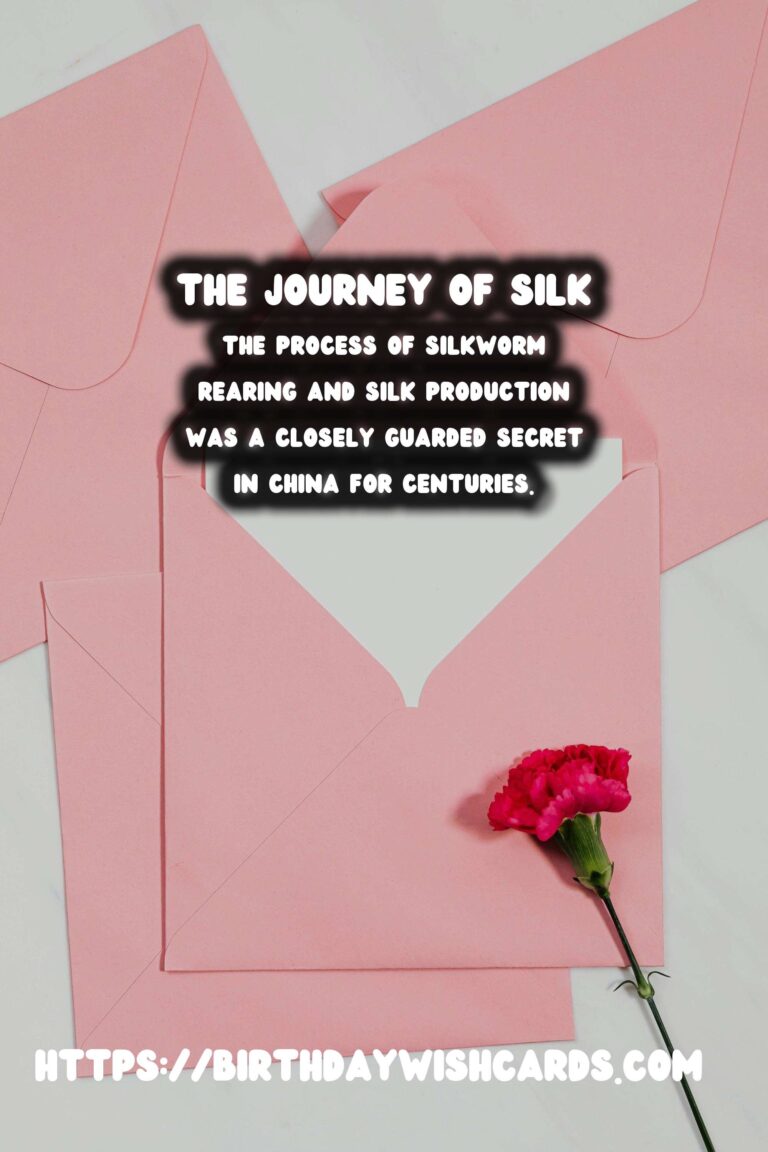
Silk, known for its luxurious texture and shimmering appearance, has a history steeped in mystery and intrigue. This remarkable fabric has made a remarkable journey from the hands of ancient Chinese weavers to becoming a highly sought-after material across Europe.
Origins of Silk in Ancient China
The story of silk begins in ancient China, where it was discovered over 4,000 years ago. Legend credits the discovery to Empress Leizu, who allegedly unwound a cocoon from a mulberry tree into fine silk thread after it fell into her tea. Archaeological evidence points to the establishment of silk farming, or sericulture, taking place during the Neolithic period.
The process of silkworm rearing and silk production was a closely guarded secret in China for centuries. This exclusivity allowed China to control silk trade, making it a highly valuable asset.
The Silk Road: A Network of Trade
The Silk Road, a vast network of trade routes, was pivotal in spreading silk from China to the Western world. Established during the Han Dynasty around 130 BCE, it connected Asia with Africa and Europe, facilitating cultural and commercial exchange.
Along with silk, the Silk Road enabled the exchange of spices, precious stones, and other commodities, significantly influencing the economies and cultures of the regions it connected.
Silk in the Roman Empire
As silk traveled westward, it caught the eye of the Roman Empire. The Romans were captivated by the soft and delicate nature of silk, which became synonymous with wealth and status. Roman emperors and the elite would drape themselves in silk, further increasing its demand.
The high demand for silk in Europe led to increased trade, fostering a relationship between East and West, even amid political tensions and warfare.
The Secret of Silk Reaches Europe
Despite China’s efforts to keep silk production a secret, it eventually leaked into other regions. According to accounts, silk production techniques were smuggled to the Byzantine Empire by monks in the 6th century, concealed in hollowed-out walking sticks.
Once the silk-making process was understood, efforts to produce it spread across the Mediterranean and into the rest of Europe, marking the end of China’s silk monopoly.
The Impact of Silk on Europe
Silk’s introduction to Europe had a profound economic and cultural impact. It became an integral part of European fashion, with Italy emerging as the center of silk weaving expertise. Cities like Venice and Florence became renowned for their exquisite silk textiles.
Silk production contributed to Europe’s economic growth during the Renaissance, and the fabric became a symbol of elegance and opulence worldwide.
Conclusion: The Legacy of Silk
From its mystical origins in China to becoming an integral part of European fashion, silk’s history is a testament to human ingenuity and cultural exchanges. Today, silk remains a highly coveted fabric, admired for its luxurious quality and the rich history that accompanies it.
As we look back on the journey of silk, it’s clear that this timeless fabric not only clothed bodies but also connected continents and civilizations. Silk continues to be an enduring symbol of luxury, beauty, and intercultural exchange across the globe.
Silk, known for its luxurious texture and shimmering appearance, has a history steeped in mystery and intrigue. The process of silkworm rearing and silk production was a closely guarded secret in China for centuries.
#SilkHistory #AncientTextiles

